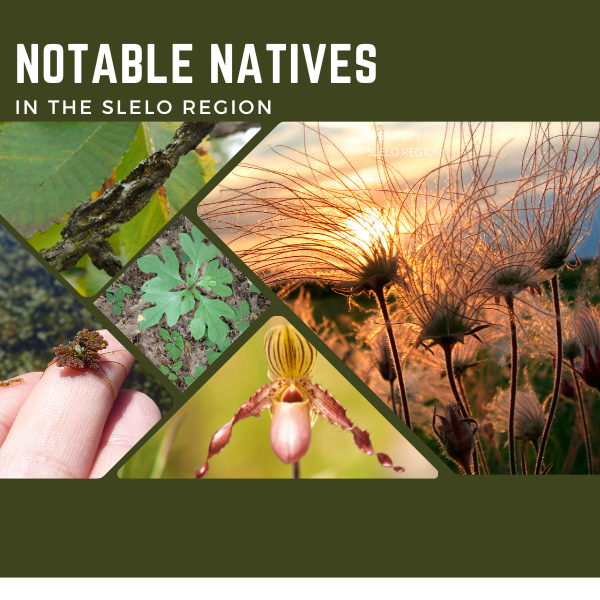This article was featured in the 2022 Autumn Newsletter by Robert Smtih-SLELO PRISM.
Notable Natives
During our early detection surveys, we see many native plant species when we are looking for invasive species. These are the species that we are protecting, and we have been recording these native species to get a better understanding of what species are adjacent to the invasive species that we are looking for. Sometimes, these native plant species are rare, and sometimes they are just species that we didn’t expect to find. Here are two of these species we observed this year.
Sassafras (Sassafras albidum):
While not a state rare species, it is rare to the SLELO Region and only found in one of our PCAs (Three Mile Bay WMA). This is because the southern end of SLELO PRISM is located at the northern limit of the range of this tree. It is unique in that it has three distinct leaf shapes
(unilobed—bilobed and trilobed). The fall foliage ranges from yellow/orange to scarlet/purple. The fruit of this tree is dark blue and is eaten by deer, bears, and many different birds. Sassafras oil/roots have also been used to perfume some soaps and make a tea that tastes like root beer.

Prairie Smoke (Geum triflorum):
This plant is a state-threatened species and can only be found in Jefferson County. The only PCA
that we have found it in is Chaumont Barrens. It flowers early from April to June. The flowers are red and initially nod down and are bud like until they are pollinated by bumblebees. After pollination, the flower opens and becomes erect. The fruit is a seed with a 2-inch long plume. This plume gives it a smoky appearance and is the source of its common name. The roots of this plant can be made into a tea that tastes like Sassafras.



